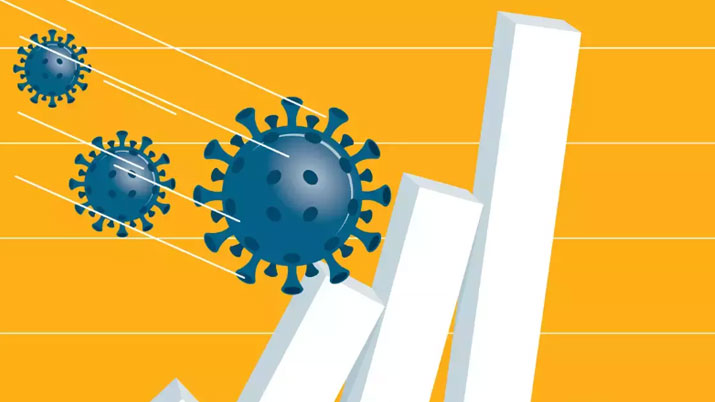The COVID-19 variant first found in India will be referred to as the “Delta variant”, the World Health Organization (WHO) announced on Monday. Delhi on Tuesday reported 623 fresh COVID-19 cases, the lowest in two and a half months, and 62 more deaths, while the positivity rate fell below one percent for the second consecutive day. This is the third day that the daily deaths in the city remained below 100. Delhi on Monday had reported 648 fresh COVID-19 cases and 86 more deaths, while the positivity rate was 0.99 per cent. India on early Wednesday received a consignment of 15 ventilators, and 12000 tablets of Favipiravir from Iceland as the country combat the second wave of COVID-19 pandemic. “Taking forward our warm and friendly ties. Welcome consignment of 15 Ventilators and 12000 tablets of Favipiravir that arrived from Iceland early this morning,” tweeted Mr Bagchi.
The information about the consignment was shared by Arindam Bagchi, Spokesperson Ministry of External Affairs, through his Twitter handle. In the ongoing vaccination drive 15,203 people were vaccinated in 353 sessions in different parts of the state on Monday. A total of 6,83,881 people have been fully vaccinated while 22,31,575 have received the first dose of the vaccine in the state. Keeping in mind the positivity rate of less than 5 per cent for a week, vaccination of 70 per cent of the vulnerable population, and community ownership of Covid-appropriate behaviour and care, the Centre on Tuesday laid down key un-lockdown criteria for districts to ward off a possible third wave. On Tuesday, Dr Balram Bhargava, ICMR Director General and a member of India’s Covid-19 task force, underlined that while “gradual lifting [of restrictions] will not witness a massive surge”, districts have to “ensure that vaccination has to be prioritised…” Bhargava’s statement comes in the backdrop of 344 districts nearly half of India’s 718 districts now reporting seven-day positivity of less than 5 per cent.
According to the Health Ministry’s vaccination data, as of May 13, 32 per cent of those in the 45+ age group have got their first dose.
“We are in the midst of a ferocious second wave, although it has been abating now. If we look at the data, in the first week of April, we had less than 200 districts that had more than 10 per cent positivity. And in the last week of April, we had nearly 600 districts with more than 10 per cent positivity… Today, there are 239 districts in the country which have more than 10 per cent positivity; 145 districts are between 5 per cent-10 per cent positivity; and 350 districts, which is nearly half of India, have less than 5 per cent positivity. Therefore, we are moving in the right direction,” Bhargava said.
He said that while district-level containment has worked, it is “not a sustainable solution” and thus, a mechanism to ease lockdowns needs to be worked out. “It has to be done very gradually and very slowly. Basically, the opening up revolves around three pillars: one, the test positivity rate in that particular district has to be less than 5 per cent over one week… so seven-day average has to be less than 5 per cent. Second, vulnerable individuals, i.e. elderly more than 60 years and more than 45 years with comorbidities, should be vaccinated. Their vaccination rate should reach up to 70 per cent… Third, community ownership for Covid-appropriate behaviour and care should be taken up… in a big way… We have to remember our vaccination is being ramped up. By December, we hope to have the whole country vaccinated…” Bhargava said.
States like Delhi, Uttar Pradesh, Madhya Pradesh, and Jammu and Kashmir have already started gradual (partial) unlocking in their respective states with virus infections under control. While Delhi has extended the curfew on the movement of individuals in the city till 5 am on 7 June, it allowed factory and construction activities. Haryana will be under lockdown for one more week but the state has relaxed the restrictions on shop timings and malls. Uttar Pradesh has lifted curfew from 64 districts. But states like Gujarat, Maharashtra, West Bengal, Odisha, Bihar, Kerala, Tamil Nadu, Andhra Pradesh, Telangana, Rajasthan, Punjab, and Goa have extended lockdown/restrictions in their respective states in order to limit the spread of virus infections.


